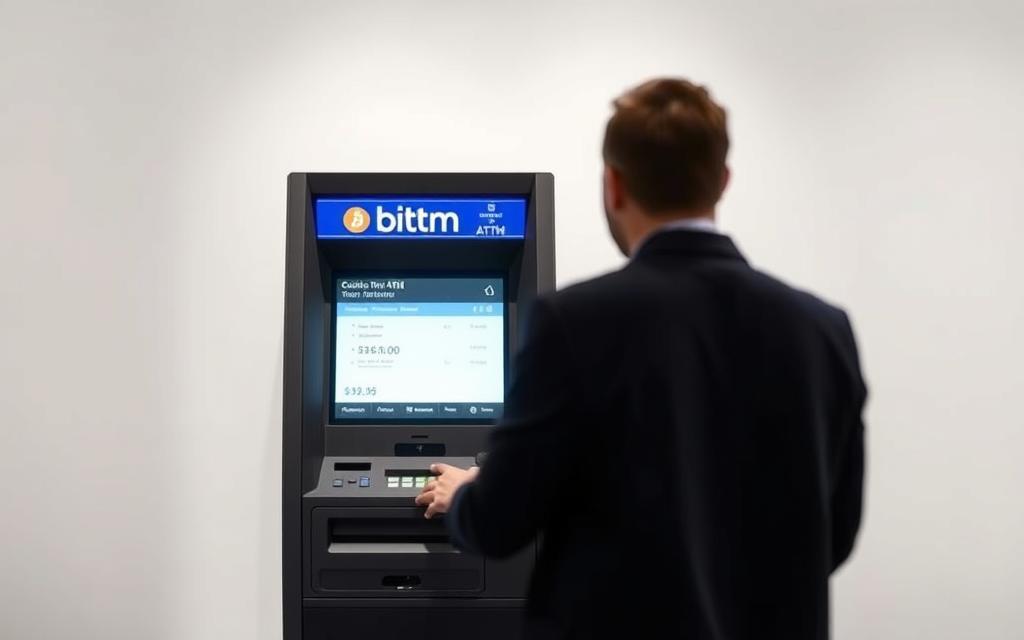Table of Contents
With rising market volatility in 2025, many investors seek ways to sell crypto securely. Converting digital assets to fiat requires careful planning to avoid risks and ensure compliance.
Tax obligations play a crucial role in this process. Proper reporting helps avoid penalties while maximizing returns. TokenTax, a leader in cryptocurrency tax guidelines, emphasizes transparency.
This guide explores five reliable methods for converting digital holdings. Each option balances speed, fees, and security. Understanding these choices ensures smooth transactions.
Security remains a top priority. Always verify platforms and monitor transaction details. Awareness of potential fees prevents unexpected losses during exchanges.
Understanding How to Cash Out Crypto
Turning virtual coins into spendable funds requires careful planning. This process, often called converting to fiat currency, involves exchanging Bitcoin or other tokens for USD, EUR, or GBP. Platforms like Coinbase or Kraken facilitate these transactions.
Tax implications are unavoidable. Profits from crypto sales trigger capital gains taxes. For example, a €10,000 profit could owe €2,000–€3,000 in taxes, depending on jurisdiction.
U.S. investors must report all transactions to the IRS. Forms like 8949 detail sales and calculate owed amounts. Failure to file risks penalties or audits.
Holding periods matter. Assets held under a year face higher short-term rates (up to 37%). Long-term holdings (1+ years) qualify for reduced rates (0%–20%).
Market volatility persists even during withdrawals. A 5% price swing between sale and bank transfer could slash profits. Timing matters as much as method selection.
Method 1: Selling Crypto Through an Exchange
Exchanges remain the most straightforward way to convert digital assets into traditional money. Platforms like Coinbase, Binance, and Kraken offer user-friendly interfaces and regulatory compliance. Each exchange varies in fees, supported currencies, and withdrawal options.

Choosing the Right Exchange
Compare features before selecting a platform. Coinbase suits beginners with its simple design, while Binance caters to global traders with lower fees. Kraken strikes a balance with robust security and competitive rates.
Always verify a platform’s compliance with local laws. For example, Binance.US restricts services in New York due to state regulations. Check for KYC requirements—most exchanges mandate ID verification.
Step-by-Step Selling Process
First, link your bank account or debit card. Navigate to the “Sell” tab and select your asset. Choose between market orders (instant sale) or limit orders (set your price).
Fees typically range from 1% to 2%. For instance, Coinbase charges 1.49% for instant sales. Confirm the transaction details before finalizing to avoid errors.
Withdrawing Funds to Your Bank Account
After selling, transfer funds to your linked account. Some platforms offer instant USD balances, while bank transfers take 1–3 business days. Monitor for hidden fees, like network or withdrawal charges.
For recurring transactions, set up automated withdrawals. This minimizes manual steps and ensures timely access to your money.
Method 2: Using a Brokerage Account
Spot Bitcoin ETFs have revolutionized access to crypto liquidity through mainstream finance. These funds, like BlackRock’s IBIT with a 0.12% expense ratio, let investors trade Bitcoin without managing private keys. Brokerages such as Robinhood and Webull integrate these ETFs alongside stocks, simplifying portfolio management.
Spot Bitcoin ETFs and Their Benefits
ETFs eliminate the technical hurdles of crypto exchanges. They track Bitcoin’s price while offering familiar trading interfaces. Lower fees (often under 0.5%) and automatic tax documentation make them appealing for long-term holders.
Key advantages include:
- Instant settlement: Funds appear in your account after sale.
- Regulatory oversight: SEC-approved ETFs reduce counterparty risks.
- Tax efficiency: Brokerages auto-generate Form 1099-B for capital gains.
Executing Trades on Brokerage Platforms
Platforms like Robinhood mirror stock trading workflows. Users select “BTC” or an ETF symbol, choose “Sell,” and confirm the order. Unlike decentralized markets, brokerages guarantee liquidity during volatile swings.
However, watch for pitfalls:
- Wash sale rules: IRS prohibits claiming losses if repurchased within 30 days.
- Limited assets: Most brokerages support only bitcoin cash and major tokens.
“ETFs bridge crypto and traditional finance, but due diligence remains critical.”
For deeper insights, explore crypto tax implications when using brokerages.
Method 3: Peer-to-Peer (P2P) Trading
Peer-to-peer trading offers direct transactions between buyers and sellers, bypassing traditional intermediaries. Platforms like Binance P2P and Paxful connect users globally, supporting 400+ payment options—from gift cards to Wise transfers.
How P2P Platforms Work
These platforms act as matchmakers. Sellers list assets at fixed prices, while buyers filter offers by location or payment method. Transactions occur off-chain, reducing fees compared to centralized exchanges.
Key features include:
- Regional flexibility: Paxful dominates African markets with mobile-money integrations.
- Speed: Trades complete in minutes if both parties cooperate.
- Variety: Binance P2P supports currencies like TRY and INR.
Escrow Services and Security Measures
Escrow services hold crypto until the buyer confirms fiat receipt. This prevents scams but isn’t foolproof. Sellers risk chargebacks if buyers dispute bank transfers.
To mitigate risks:
- Trade only with verified partners (badges indicate trust scores).
- Avoid reversible payment methods like PayPal.
- Use platform chat logs as dispute evidence.
“P2P markets thrive where banking access is limited, but vigilance is non-negotiable.”
Method 4: Cashing Out at a Bitcoin ATM
Bitcoin ATMs provide instant access to physical currency from digital assets. These kiosks, like those operated by Hermes, bridge the gap between blockchain and traditional banking. Users can withdraw funds within minutes, making them ideal for urgent liquidity needs.

Locating and Using a Bitcoin ATM
Platforms like CoinATMRadar list over 38,000 machines globally. Simply scan a QR code from your wallet, confirm the amount, and wait approximately two minutes for cash dispensation. Transactions are irreversible, so double-check addresses before proceeding.
Fees and Identity Verification
ATM fees range from 5% to 15%—significantly higher than exchanges. Post-2023 regulations require SMS-based identity verification for transactions exceeding $1,000. Unregistered ATMs pose risks, including wallet skimming.
| Feature | Bitcoin ATM | Exchange |
|---|---|---|
| Speed | Instant | 1–3 days |
| Fees | 5–15% | 1–3% |
| Anonymity | Partial | None (KYC) |
“ATMs democratize access to crypto liquidity, but always verify machine legitimacy.”
For recurring needs, exchanges offer better rates. However, ATMs excel for one-time, in-person withdrawals without bank delays.
Method 5: Converting Crypto to Stablecoins First
Stablecoins offer a strategic bridge between volatile assets and traditional currency. These dollar-pegged tokens maintain consistent value, making them ideal for temporary holdings during market uncertainty.

When Indirect Conversion Is Necessary
Some exchanges restrict direct fiat withdrawals for certain tokens. Platforms like Huobi may only support stablecoins as intermediate assets. This two-step process protects against sudden price drops between transactions.
Regulatory hurdles also necessitate indirect conversions. In regions with banking restrictions, converting to USDT or USDC first often provides more withdrawal options. Always check platform rules before initiating transfers.
Popular Stablecoins for Liquidity
Not all stablecoins offer equal benefits. Consider these top options for liquidity management:
| Stablecoin | Backing | Best For | Exchange Support |
|---|---|---|---|
| Tether (USDT) | Mixed reserves | High liquidity | 95% of platforms |
| USDC | Cash equivalents | Transparency | 80% of platforms |
| DAI | Crypto collateral | Decentralization | 65% of platforms |
The conversion process typically follows these steps:
- Transfer crypto from your wallet to an exchange
- Swap for USDT or USDC at current rates
- Convert stablecoins to fiat via linked bank account
Remember: The IRS treats stablecoin swaps as taxable events. Document all conversions using Form 8949 to accurately report capital gains or losses.
“Stablecoins reduce volatility risks but require the same tax diligence as direct sales.”
Key Considerations When Cashing Out
Taxes and fees can significantly impact your profits when liquidating cryptocurrency holdings. Strategic planning ensures compliance and minimizes unexpected costs. Below are critical factors to evaluate before initiating withdrawals.

Understanding Tax Implications
The IRS treats crypto as property, meaning every sale triggers a taxable event. Short-term holdings (under 1 year) face federal rates up to 37%, while long-term gains drop to 0%–20%. TokenTax highlights that misreporting can lead to audits or penalties.
Tools like CoinTracker automate gain/loss calculations by syncing with exchanges. They generate IRS Form 8949, simplifying annual filings.
Calculating Capital Gains and Losses
Capital gains depend on purchase price, sale price, and holding period. For example:
- Short-term: Bought 1 BTC at $30,000, sold at $40,000 = $10,000 taxed at 37%.
- Long-term: Held 13 months, same profit = $10,000 taxed at 15%.
Losses offset gains. A $5,000 loss reduces taxable income by the same amount.
Transaction Fees and Hidden Costs
Platforms charge varying fees for withdrawals and conversions. Offshore exchanges may impose limits or higher rates. Compare options:
| Fee Type | Example Cost | Platform |
|---|---|---|
| Wire Transfer | $25 | Kraken |
| ACH Transfer | 1% | Coinbase |
| Network (ERC-20) | $5 | MetaMask |
| Network (Solana) | $0.001 | Phantom |
“Overlooking fees can erode 10%–15% of profits. Always review the fine print.”
Monitor exchange withdrawal limits—some cap daily amounts unless identity is verified.
Ensuring Security During Transactions
Protecting digital assets during liquidation demands robust security measures. Hackers often target high-value transfers, making vigilance non-negotiable. Implement these protocols to safeguard funds and personal data.
Two-Factor Authentication (2FA)
Enable two-factor authentication on all exchange and wallet accounts. Apps like Google Authenticator generate time-sensitive codes, offering stronger protection than SMS. Avoid shared devices for 2FA setups to prevent breaches.
For added security, use hardware keys like YubiKey. These physical devices block remote access attempts. Exchanges like Coinbase support them for login approvals and withdrawal confirmations.
Avoiding Scams and Phishing Attempts
Phishing attempts mimic legitimate sites to steal credentials. Always bookmark exchange URLs and manually type them. Never click links from unsolicited emails or messages promising “free crypto.”
Recognize red flags:
- Guaranteed returns: Ponzi schemes often use this language.
- Urgency tactics: “Your account will be locked!” prompts are fake.
- Misspelled domains: “Coinbasse.com” instead of “Coinbase.com.”
“Security isn’t expensive—it’s priceless. One missed step can wipe out years of gains.”
Transfer assets to a cold wallet like Ledger Nano X before initiating sales. Offline storage prevents remote hacking during the cash-out process.
Conclusion
Liquidating digital assets demands strategic planning for optimal results. Compare withdrawal methods—ETFs offer speed, while P2P trades may lower fees. Hybrid approaches, like converting to stablecoins first, reduce volatility risks.
Remember U.S. tax deadlines: April 15 for reporting gains. Use tools like TokenTax for audit-proof records. Always verify platform rules before initiating transfers to your bank account.
Prioritize secure practices. Test small withdrawals to confirm processing times. Combine methods for flexibility, such as ETF sales paired with stablecoin conversions.
Whether you cash out via exchanges or ATMs, diligence ensures smooth transactions. Stay informed, stay compliant, and protect your crypto profits.
FAQ
What’s the safest way to sell cryptocurrency?
The safest method is through a reputable exchange like Coinbase or Kraken. These platforms offer secure transactions, identity verification, and direct bank transfers.
Are there tax implications when converting crypto to fiat?
Yes. Selling digital assets triggers capital gains tax in most countries. Keep records of transactions to report profits or losses accurately.
How long does it take to withdraw funds to a bank account?
Processing times vary. Some exchanges complete transfers in 1-3 business days, while peer-to-peer trades or Bitcoin ATMs may offer instant cash.
What fees should I expect when cashing out?
Exchanges charge withdrawal fees (0.1%-1.5%), while Bitcoin ATMs may impose higher costs (5%-10%). Always compare rates before transacting.
Can I use stablecoins to minimize volatility before cashing out?
Yes. Converting volatile assets like Bitcoin to USDT or USDC first locks in value, reducing exposure to market swings before a fiat withdrawal.
Is peer-to-peer trading secure for large withdrawals?
P2P platforms like LocalBitcoins or Paxful use escrow services to protect buyers and sellers. Verify trader reputations and use secure payment methods.
Do Bitcoin ATMs require identity verification?
Most ATMs mandate ID checks for transactions above certain limits (often 0+). Fees and daily withdrawal caps vary by operator.
How do brokerage accounts simplify cashing out?
Platforms like Robinhood or eToro let users sell crypto directly for fiat, often with lower fees than traditional exchanges and integrated tax reporting.









